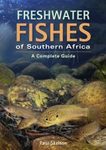About this book
The garden eels (subfamily Heterocongrinae of family Congridae) comprise 2 genera, Heteroconger Bleeker and Gorgasia Meek and Hildebrand and 26 species worldwide. Twenty-one are recognized for the Indo-Pacific region, 5 of which are here described as new.
The 11 valid Indo-Pacific species of Heteroconger are readily distinguished by their distinctive color patterns and vertebral counts: H. balteatus n. sp., from the Red Sea, is short-bodied with large orange spots, a prominent white bar on trunk, and 158-161 vertebrae; H. cobra Böhlke and Randall, from the Solomon Islands, has small dark brown spots, 3 large black and white markings anteriorly, and 198-204 vertebrae; H. enigmaticus n. sp., from central Indonesia, is short-bodied, plain brown, with pterygoid teeth and 154-163 vertebrae; H. hassi (Klausewitz and Eibl-Eibesfeldt), wide-ranging in the Indo-Pacific and the most frequently seen and collected garden eel, is finely dark-spotted with 2 large black blotches anteriorly, and 164-175 vertebrae; H. lentiginosus Böhlke and Randall, from the Society Islands and Marquesas, is finely dark-spotted except blackish anteriorly on head, followed by a large white area, with 173-176 vertebrae; H. obscurus (Klausewitz and Eibl-Eibesfeldt), known from 1 specimen from the Nicobar Islands, is short-bodied, brown with dark brown speckles, and 144 vertebrae; H. perissodon Böhlke and Randall, from the Philippines and Indonesia, is brown with a dark blotch on the gill opening, preceded by a white blotch, the edges of fins narrowly white, with pterygoid teeth, and 173-176 vertebrae; H. polyzona Bleeker, from Indonesia, Papua New Guinea, Vanuatu, and the Ryukyu Islands, is short-bodied, white with zebra-like dark bars anteriorly and small dark spots posteriorly, lacks pectoral fins, and has 153-159 vertebrae; H. taylori Castle and Randall, from the D'Entrecasteaux Islands and Bali, is short-bodied, pale yellowish with numerous close-set black spots (many of which join to form short irregular segments), pterygoid teeth, and 169-172 vertebrae; H. tomberua n. sp., from Fiji, a very slender species, evenly dark-spotted, with 186-208 vertebrae; and H. tricia n. sp., from central Indonesia, is long-bodied, orange-spotted, with 210 vertebrae. Heteroconger chapmani (Herre), inadequately described from 2 poorly preserved Philippine specimens that are no longer extant, is regarded unidentifiable.
The 10 Indo-Pacific species of Gorgasia, though generally having distinctive vertebral counts, are more difficult to distinguish because of their similar coloration (G. preclara a distinct exception): G. barnesi Robison and Lancraft, the largest of the garden eels (more than 1 m), recorded from Indonesia, Papua New Guinea, Solomon Islands, and Vanuatu, is slender with numerous close-set, small black spots, lateral-line pores in white spots, and 201-219 vertebrae; G. galzini n. sp., described from the Marshall Islands, Coral Sea, American Samoa, and Society Islands, is a very small slender species with minute, profuse dark spots, white postorbital patches, widely spaced dark spots along edge of dorsal fin, and 178-188 vertebrae; G. hawaiiensis Randall and Chess, known only from the Hawaiian Islands, is slender, pale gray-green with numerous small brownish yellow spots, and 165-172 vertebrae; G. japonica Abe, Miki and Asai, an antitropical species from Japan, Taiwan and New Zealand, is very elongate, brown with a prominent white spot around sensory pores, and 187-196 vertebrae; G. klausewitzi Quéro and Saldanha, from Réunion, Mauritius and the Comoro Islands is slender, with the snout and throat covered with papillated ridges, brown with fine black speckles that group to form round spots anteriorly, and has 178-181 vertebrae; G. maculata Klausewitz and Eibl-Eibesfeldt, wide-ranging from the Western Indian Ocean to the Solomon Islands, is light tan to brown with numerous small darker spots, prominent white spots around head pores and lateral-line pores, and has 167-178 vertebrae; G. naeocepaea (Böhlke), recorded from only 2 specimens of unknown color from Mindanao, is distinctive in head length 14.6% of snout-anus length and 177 vertebrae (175 for paratype, but tail tip damaged); G. preclara Böhlke and Randall, known from East Africa and the Maldive Islands to the western Pacific, is short-bodied with the lowest number of total lateral-line pores (58-69), strikingly colored with orange and white bars, and 144-152 vertebrae; G. sillneri Klausewitz, from the Red Sea is elongate, whitish to pale olivaceous with numerous small close-set yellow to yellowish brown spots, and 170-177 vertebrae; and G. taiwanensis Shao from Taiwan and Japan, is slender, bluish gray with small bronze yellow spots, and 156-167 vertebrae. The description of a new species of Gorgasia represented by a single 183-mm specimen from the Marquesas is deferred until more specimens are obtained.
Customer Reviews






































